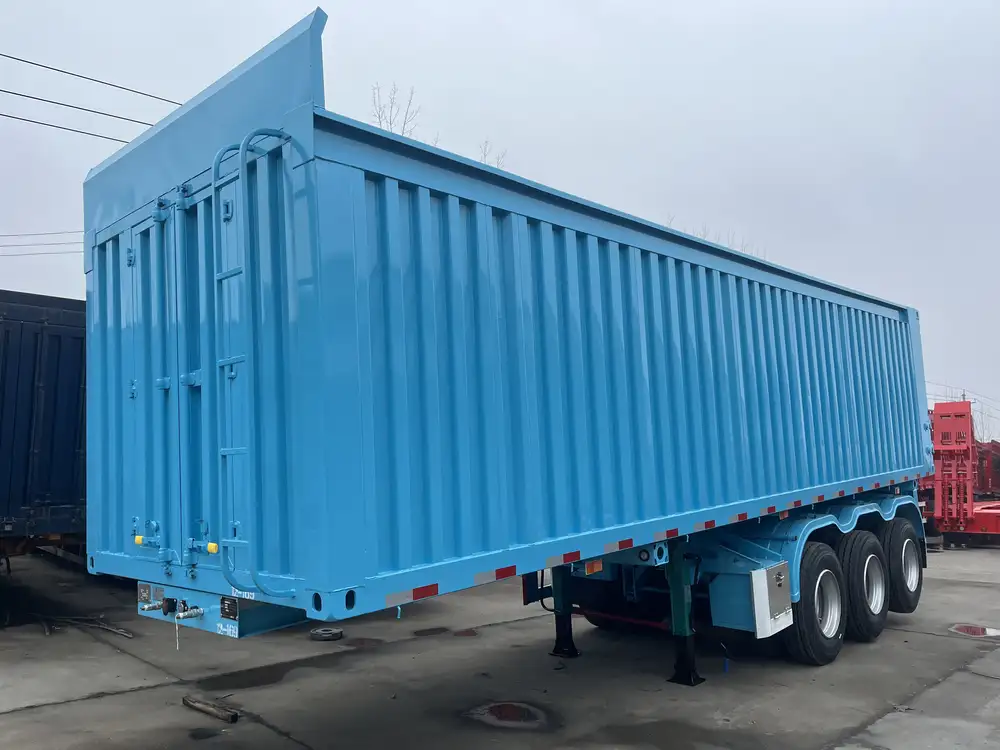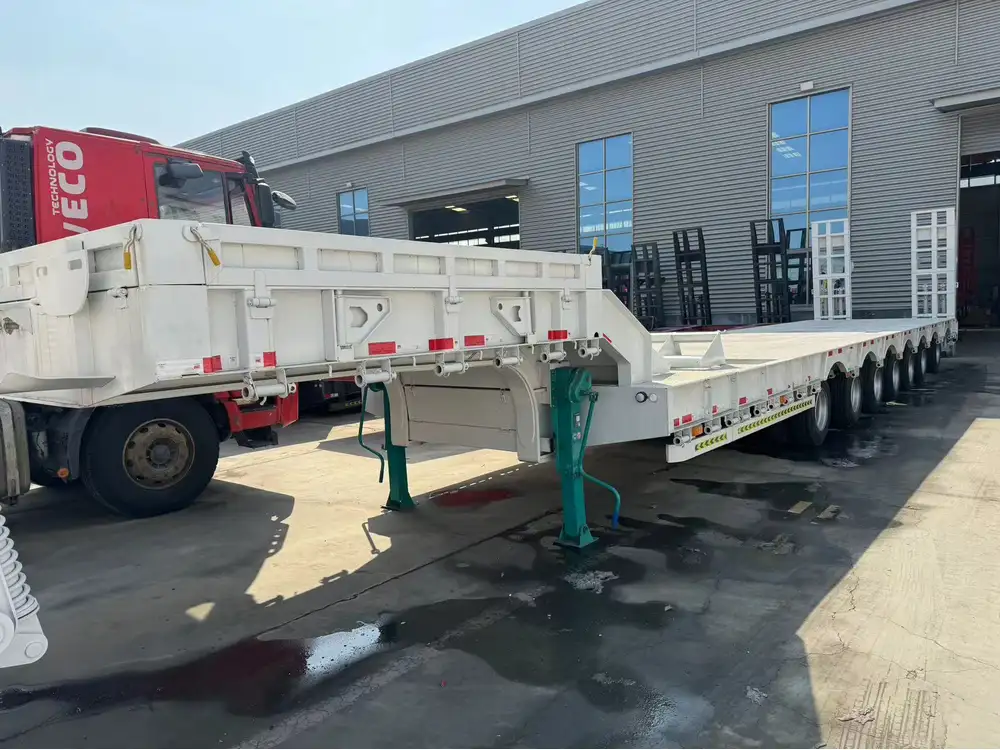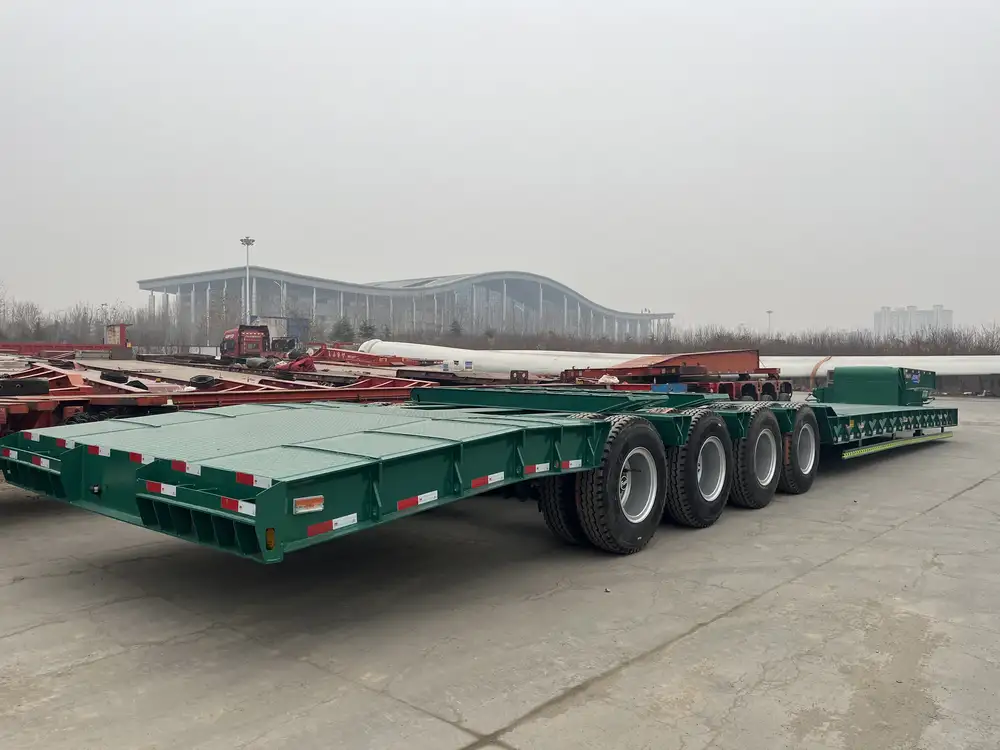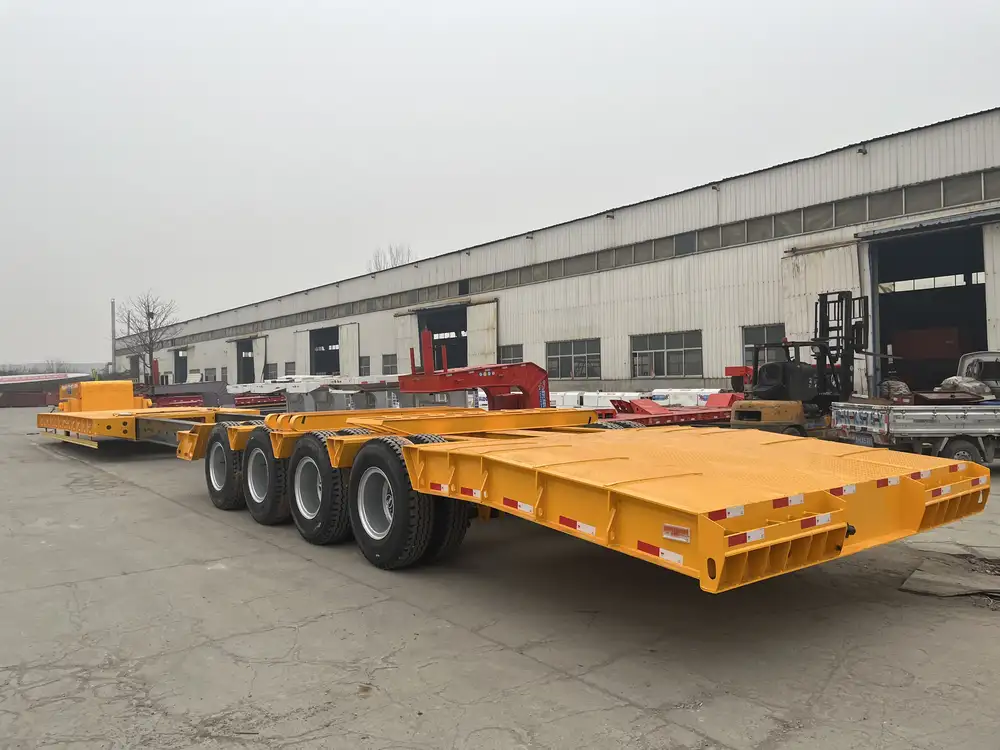Transporting goods via flatbed trailers requires meticulous attention to securing the load effectively. The safety of the cargo and the operational efficiency of transportation depends heavily on proper strapping techniques. In this guide, we will delve deep into the steps, materials, and best practices for strapping a flatbed trailer, ensuring you have a comprehensive understanding to optimize your load security.
Understanding Load Security
Before we dive into the specifics of strapping, let’s take a moment to grasp the importance of load security inherently tied to your operations. Properly secured loads:
- Prevent accidents
- Mitigate cargo damage
- Comply with regulations
- Enhance the overall efficiency of transportation
Key terms associated with load security:
| Term | Explanation |
|---|---|
| Load Tie-Down | Straps or chains used to secure cargo on a trailer |
| Working Load Limit (WLL) | The maximum load a strap can safely bear |
| Cargo Net | A net used to hold down smaller items on a flatbed |
| Ratchet Strap | A type of strap with a ratchet attached for tightening |
Required Materials for Strapping
When preparing to strap your flatbed trailer, ensure you have the following materials at your disposal:
- Ratchet straps: Often the best choice for securing cargo due to their adjustable nature. They come in various widths and lengths.
- Chains with binders: Used for heavier loads, offering superior strength.
- Edge protectors: Essential for preventing damage to the cargo and strapping materials.
- Cargo nets: Useful for securing smaller items or to provide an additional layer of security.
- Tarps: Protects against inclement weather and keeps cargo intact.

Material Comparison Table
| Material Type | Benefits | Drawbacks | Best Use Case |
|---|---|---|---|
| Ratchet Straps | Versatile, ease of use | Potential wear with time | General cargo |
| Chains | High strength | Heavier and more cumbersome | Heavy equipment or machinery |
| Cargo Nets | Good for small items | May not secure larger cargo firmly | Mixed loads |
| Tarps | Weather protection | May require additional fastening | Sensitive items |
Step-by-Step Guide to Strapping a Flatbed Trailer
Step 1: Prepare Your Load
Before securing your cargo, ensure the following:
- Inspect the Cargo: Assess the size, weight, and type of cargo. Ensure the weight is evenly distributed across the trailer.
- Stabilize the Load: Use wood blocks or dunnage to stabilize any loose or shifting items.
- Identify Proper Anchor Points: Locate the designated tie-down points on your flatbed. These are essential for effectively strapping down the load, preventing any movement during transit.

Step 2: Choose the Right Straps
The type of cargo and its weight will dictate the strapping material you utilize. For instance:
- For lightweight items, ratchet straps (1-inch or 2-inch width) will suffice.
- For heavier machinery, opt for chains that can handle the Working Load Limit (WLL) suited to the cargo’s weight.
Step 3: Position the Straps
Configuring the Straps:
- Remove Any Excess: Avoid tangled straps by laying them out flat.
- Place Edge Protectors: If your cargo has sharp corners, place edge protectors to avoid strap damage and provide a more secure surface.
- Position the Straps Over the Cargo: Ensure that the straps are positioned to cover the widest points of the cargo, distributing pressure evenly on the load.
Step 4: Tighten the Straps
- Attach Ratchet Straps: Feed the strap through the ratchet and pull until taut, ensuring there’s minimal slack. Avoid overtightening, as this can damage the cargo.
- Secure the Chain Binders: If using chains, ensure that the binder is securely fastened and tight.

Step 5: Conduct a Safety Check
After securing the load, it’s critical to take the following safety measures:
- Inspect Straps: Ensure all straps are tightly fastened, without any frays.
- Check the Load: Ensure the load is stable, and no items are protruding from the edges which could pose hazards.
- Conduct a Test Drive: If possible, drive a short distance, then visually check the load’s stability.
Common Issues and Solutions
Securing Odd-Shaped Cargo

Problem: Difficulty in securing irregularly shaped items.
Solution: Use additional straps to create a crisscross pattern over the cargo, providing multiple anchor points to reduce the chance of shifting.
Excessive Slippage
Problem: Straps slipping loose during transit.
Solution: Ensure a snug fit by proper tensioning methods and consider using rubberized strap protectors to increase grip.

Weight Distribution Challenges
Problem: Load weight is unevenly distributed.
Solution: Reorganize cargo prior to securing, ensuring that heavier items are positioned closer to the center of the trailer to maintain stability.
Maintenance Tips for Strapping Equipment
- Regular Inspections: Check ratchet straps and chains regularly for signs of wear and tear.
- Proper Storage: Store strapping materials in a dry, cool place to prevent deterioration.
- Cleaning: Keep straps clean, removing any debris that may compromise their integrity.

Regulatory Compliance
We cannot overlook the regulations governing load securement. Each jurisdiction may have its own specific requirements, but generally, it revolves around the following:
- Adequate Tie-Downs: Ensure you utilize sufficient tie-downs as mandated by weight and type of cargo.
- Documentation: Some loads require documentation proving compliance with regulations.
Important Load Securement Regulations
| Regulation | Description |
|---|---|
| FMCSA Guidelines | Federal Motor Carrier Safety Administration guidelines regarding load securement methods |
| DOT Requirements | Department of Transportation mandates surrounding proper load handling and securing |
| ASTM Standards | American Society for Testing and Materials standards for the load tie-down technology |
Expert Tips for Enhanced Load Security
- Stay Informed on Best Practices: Join forums or associations that specialize in transport logistics; staying updated on best practices can significantly enhance your operations.
- Training Programs: Regularly participate in training programs for load securement to improve skills and knowledge.
- Continuous Improvement: Regularly review your processes and be open to adopting new technologies that can improve safety and efficiency.

Conclusion
Safely strapping down a flatbed trailer is not merely about aesthetics; it’s a fundamental responsibility that comes with great consequence. By adhering to the outlined steps, utilizing appropriate materials, and maintaining a rigorous inspection routine, you can ensure that your loads are secured effectively, mitigating risks and optimizing operational efficiency.
Investing time in understanding and applying these principles is ultimately an investment in the safety and integrity of your cargo, your trailer, and your business. Secure your cargo right today to ensure smoother operations tomorrow.



